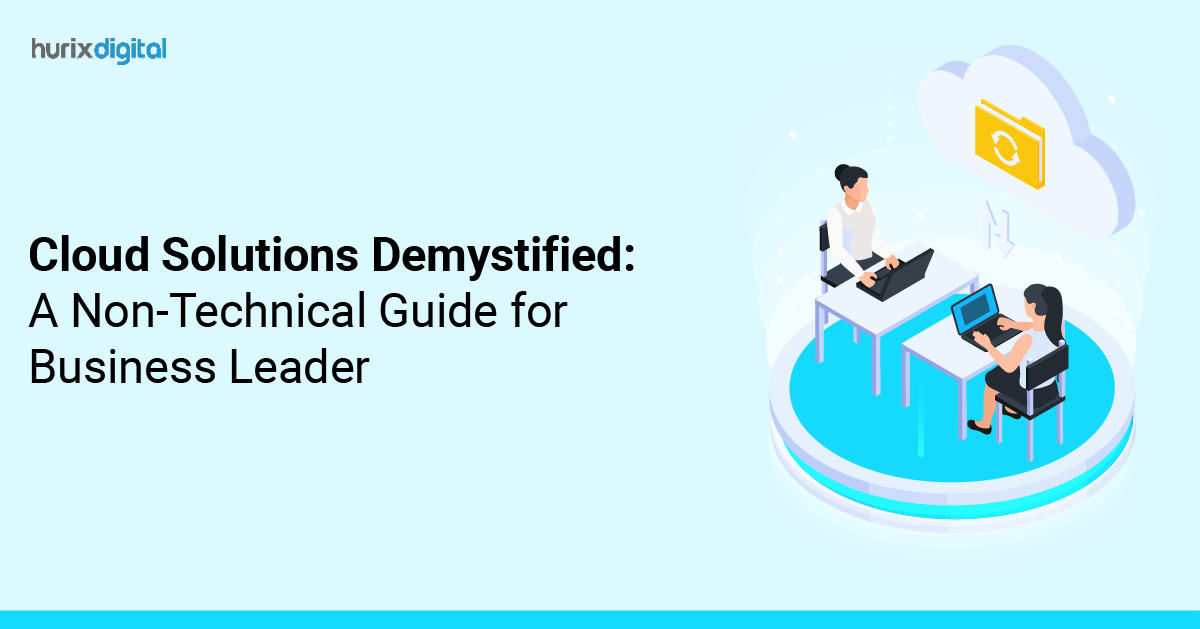
Top 6 Cloud Infrastructure Management Software Solutions for Enterprises
Summarize with:
The proliferation of cloud technologies in recent years has changed the way enterprises and IT managers approach the management of IT costs, security, compliance, and infrastructure management. The most significant change is the rapid rise of cloud infrastructure management software solutions with the aim of offering businesses the required tools to monitor and optimize resources, data, and applications that exist within a cloud environment.
A key objective of a cloud management software platform is to provide an extensive set of APIs that allow IT administrators to pull and consolidate data from every part of the IT infrastructure within their organization. It also allows the company to establish a structured approach to security and IT governance that can be extended to the entire cloud environment of the organization.
Table of Contents:
Top Cloud Infrastructure Management Software
In this blog, we’re comparing the top 6 cloud infrastructure management software solutions in terms of features, positives, and negatives, to enable you to make an informed choice.
1. OpenStack
OpenStack is one of the most popular free and open-source cloud infrastructure management software platforms for cloud computing. In most cases, it is deployed as an infrastructure as a service (IaaS).
Below are some of the top features of OpenStack –
- Automates all the important processes such as application lifecycle, networking, workload provisioning, storage, and container infrastructure
- Integrates with legacy systems and works with many open-source technologies, making it suitable for heterogeneous networks
- Multi-dimensional scalability for both vertically and horizontally distributed storage
- Enables backup and archives large amounts of data with linear performance
Pros
- Free and open source
- Supports heterogeneous networks
Cons
- Complicated documentation
2. RackWare
RackWare’s RMM software solution is a well-known name that enables enterprises to easily and cost-effectively leverage private, public, or hybrid cloud environments without having to change their applications or operating systems.
Among the main features of RackWare –
- Delivers robust mobility across a variety of platforms and cloud stacks with automatic resource elasticity depending upon workload demand
- Enables users to scale cost-effectively across private and public clouds without the need for any application rewrites
- Helps enterprises seamlessly migrate to the cloud, protect their workloads through back up and disaster recovery, along with managing multiple physical, virtual, and cloud environments
Pros
- Automated cloud backup and recovery
- Cloud Cost optimization features like auto parking and auto-scaling
- Cloud migration capabilities
Cons
- The software can be challenging to customize
- The UI is a bit overwhelming
Also Read: Top 8 Cloud Security Best Practices
3. CloudFuze
CloudFuze is another widely-used cloud management platform that allows businesses to easily manage their files using any device. The platform also offers a robust cloud migration solution that enables customers to safely access, share, and migrate massive volumes of data.
Below are some of the other features of CloudFuze –
- Offers end-to-end cloud file and user migrations for business users, including managed migrations for big enterprises
- Offers users seamless and hassle-free access to manage files saved across multiple cloud accounts
- Features a file-sharing tool that allows teams to easily collaborate with each other irrespective of their location
Pros
- Powerful reports and analytics
- Full-content search
- Seamless synchronization
Cons
- Migration can take a while if you are migrating huge amounts of storage
4. Apache CloudStack
Apache CloudStack is specifically designed to deploy and manage large networks of virtual machines. The highlight of this software is a turnkey Infrastructure as a Service (IaaS) cloud computing platform which includes network as a service, account management, compute orchestration, open API, and resource accounting.
Among the other features of Apache CloudStack include –
- It is an open-sourced cloud computing company that creates, manages, and deploys infrastructure cloud services
- The software can be used both by organizations running their own private clouds and public cloud computing vendors
- Apache CloudStack is designed for use by enterprises that offer on-premise cloud or hybrid solutions
- Apache CloudStack’s API is fully compatible with AWS EC2 and S3, especially suitable for hybrid cloud deployment
Pros
- Free and open-source
- AWS E2 compatible
Cons
- Not entirely customizable
5. Scalr
Scalr offers an excellent hybrid cloud management platform designed specifically for enterprises looking to build a robust cloud strategy that doesn’t compromise on security, efficiency, or cost.
Below are some of the other features of Scalr –
- Offers a self-service approach to cloud management that allows enterprises to keep the costs down while achieving modular infrastructure with agility
- Ensures that everything is shortly run through a dashboard that aims to simplify the overall user experience, with a single user interface and API required for managing multiple cloud platforms
- One of the key objectives of Scalr is to avoid vendor lock-in by encouraging policies that drive integration with existing systems instead of buying proprietary software
Pros
- Standardization with the aim of reducing costs
- Simplified self-service
Cons
- Some issues with documentation
6. Cloudability
Cloudability is a powerful cloud management platform that focuses squarely on cost optimization. Boasting of a unique approach called FinOps, it seamlessly integrates finance into the DevOps mix.
Among some of the other features of Cloudability are –
- An excellent cloud cost management solution that offers allocation reporting, RI planner, spend monitoring, EC2 usage, and AWS cost analytics
- Ideal for enterprises looking for a solution to track, manage, and optimize their cloud costs
- Features such as cost reporting based on tags, service, data transfer, etc. along with RI utilization reports
Pros
- Continuous improvement capabilities
- Regular alerts, and application dashboard to provide a clear picture of the cloud services cost
- Visualization and allocation capabilities
Cons
- The overall cost is not suitable for small-scale businesses
- There are some issues with sharing personal data
Also Read: Best Practices in Continuous Integration and Continuous Deployment (CI/CD)
Final Thoughts
Cloud infrastructure management tools help enterprises effectively monitor the different applications in the cloud environment to enable performance optimization as well as enhancement. These tools also offer flexibility and allow easy customization to the users for effective control.
When shopping for cloud management software solutions, the primary requirement is to make sure that you have a detailed understanding of your organization’s specific needs. The different tools vary in terms of features and functionalities, which make a thorough comparison necessary – of features, benefits, and challenges.
Apart from the above-listed software solutions, Hurix Digital offers one of the best cloud infrastructure management software solutions available in the market. Hurix’s professional approach, robust project management and seamless collaboration with IT teams enable highly efficient cloud management. The team offers a range of solutions that give you flexible functionalities, powerful reporting, analytics along with seamless integration with 3rd-party apps.
Get in touch with us today!
Frequently Asked Questions (FAQs)
Q1: What features are vital in cloud management tools?
A1: Automation, cost tracking, performance monitoring, compliance checks, and multi-cloud support.
Q2: Can these tools reduce cloud waste?
A2: Yes—by identifying unused resources and suggesting right-sizing opportunities.
Q3: How long does setup usually take?
A3: Deployment can take from days to weeks depending on complexity and integrations.
Q4: Do they integrate with DevOps pipelines?
A4: Most have APIs or plug-ins for CI/CD tools like Jenkins and GitLab.
Q5: What performance metrics should be tracked?
A5: Monitor CPU, memory, network latency, uptime, and alert frequency.
Summarize with:

Vice President and Strategic Business Unit Head – Cloud Services
A top technology management voice on LinkedIn with 20 Years of experience in Information Technology, Cloud Services, Digital Transformation, Application Modernization, Managed Services, IT Security Engineering and Operations Management. An avid technology Leader, Leadership Speaker, Author & Coach.
 Upcoming Masterclass | Build an Army of Brand Evangelists using Training & Development | November 20th, 8:30 AM PDT | 11:30 AM EDT | 10:00 PM IST
Upcoming Masterclass | Build an Army of Brand Evangelists using Training & Development | November 20th, 8:30 AM PDT | 11:30 AM EDT | 10:00 PM IST





